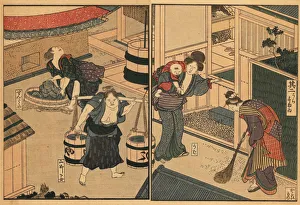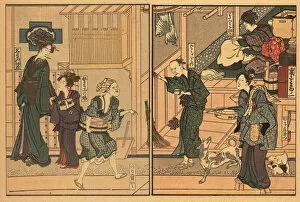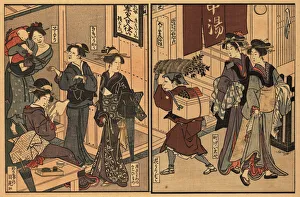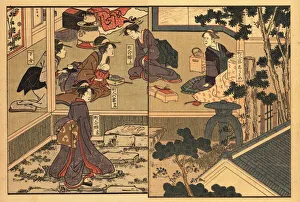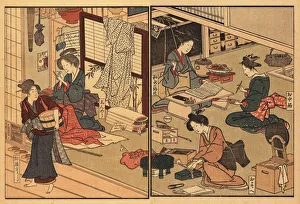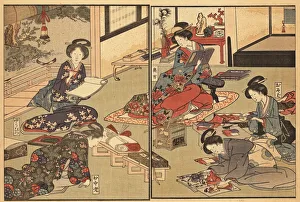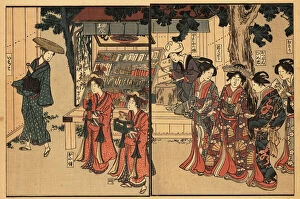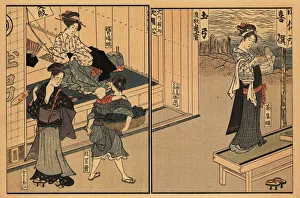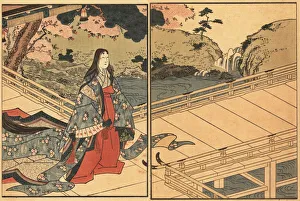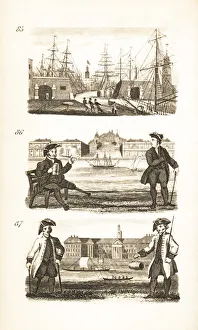Sanba Collection
"Unveiling the Lives of Sanba: Women in 18th Century Tokyo" Step back in time to the bustling streets of Edo
All Professionally Made to Order for Quick Shipping
"Unveiling the Lives of Sanba: Women in 18th Century Tokyo" Step back in time to the bustling streets of Edo, where women from all walks of life shaped the vibrant tapestry of society. In this captivating era, we catch a glimpse into the lives and roles of these remarkable individuals. Amidst the backdrop of an Edo street scene, we witness the resilience and determination of women belonging to the working class. These unsung heroines navigated their way through Tokyo's labyrinthine alleys, contributing tirelessly to support their families. In contrast, young women and geisha adorned these very streets with grace and elegance. Their presence added color to every corner as they captivated passersby with their refined arts and enchanting performances. Venturing further into this historical realm, we encounter wealthy townswomen seeking solace within a house boasting a serene courtyard. Here they found respite from societal expectations while indulging in leisurely pursuits that brought them joy and contentment. Meanwhile, women hailing from merchant or artisan backgrounds showcased their resourcefulness and entrepreneurial spirit. They skillfully maneuvered through bustling marketplaces, leaving an indelible mark on Tokyo's economic landscape. The opulent world behind closed doors reveals itself when observing a concubine (mekake) intently watching a mesmerizing dancer perform for her high-ranking lover. Such scenes offer us glimpses into complex relationships intertwined within aristocratic circles during this period. Beyond these intimate settings lies another facet – wives belonging to elite samurai classes finding moments for relaxation amidst their demanding duties. Embracing tranquility amidst chaos allowed them to rejuvenate both body and mind before returning to uphold family honor with unwavering loyalty. Japanese culture flourished outdoors too as groups of spirited women gathered for picnics in lush fields surrounding Tokyo. Amid laughter-filled conversations under cherry blossom trees, bonds were forged that would withstand the test of time.

